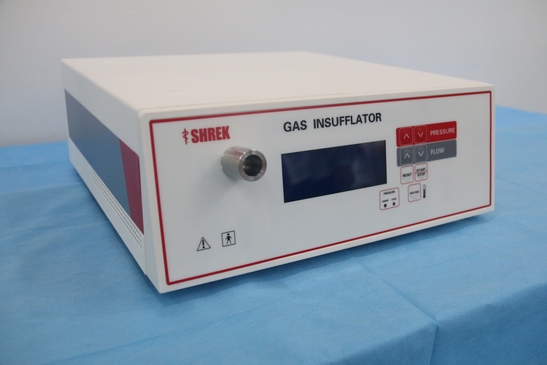Endoscopic Insufflator: A Critical Tool in Minimally Invasive Surgery
Minimally invasive surgery has revolutionized the field of surgery, providing patients with numerous benefits such as reduced blood loss, shorter recovery times, and smaller incisions. One of the key tools used in minimally invasive surgery is the endoscopic insufflator, which is used to inflate the body cavity being operated on with gas, typically carbon dioxide (CO2). This essay will discuss the importance of endoscopic insufflation in minimally invasive surgery and explore the features of the device.

Endoscopic insufflation is the process of introducing gas into a body cavity to increase the working space and visibility for the surgeon. CO2 is the most commonly used gas for endoscopic insufflation due to its non-flammable and non-toxic nature. The endoscopic insufflator is a device that controls the flow of CO2 into the body cavity being operated on. The device is typically connected to a trocar or cannula, which is inserted into the body through a small incision. The surgeon can control the pressure and flow rate of CO2 by adjusting the settings on the device.
The use of endoscopic insufflation has numerous benefits in minimally invasive surgery. By inflating the body cavity, the surgeon is able to create more working space, allowing them to maneuver surgical instruments with greater ease. This leads to more precise surgical movements and reduces the risk of damage to surrounding tissues. Endoscopic insufflation also creates a clearer field of vision for the surgeon by pushing away any obstructions such as organs or fatty tissue. This improves visualization, allowing for more accurate diagnosis and treatment.
Endoscopic insufflators have a range of features that make them versatile and user-friendly. Modern devices come with built-in safety features such as automatic pressure regulation and pressure alarms to prevent complications such as overinflation. The device can also be programmed to maintain a constant pressure within the body cavity, ensuring consistent surgical conditions. Endoscopic insufflators can be connected to multiple trocars, allowing for simultaneous inflation of multiple body cavities.
In conclusion, the endoscopic insufflator is a critical tool in minimally invasive surgery, providing numerous benefits to both patients and surgeons. The device allows for greater working space and visualization, leading to more precise surgical movements and better patient outcomes. The device's safety features and versatility make it an essential part of any modern surgical suite. As technology continues to improve, it is likely that endoscopic insufflators will become even more advanced, further enhancing the capabilities of minimally invasive surgery.



Leave a message